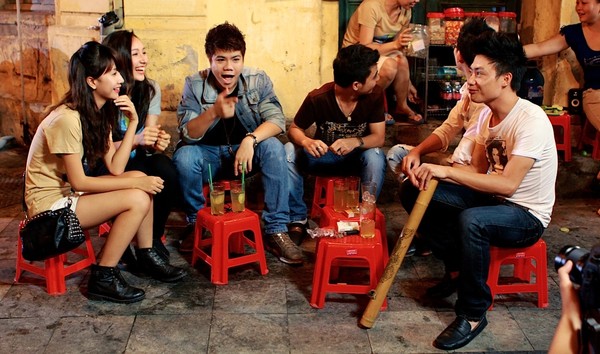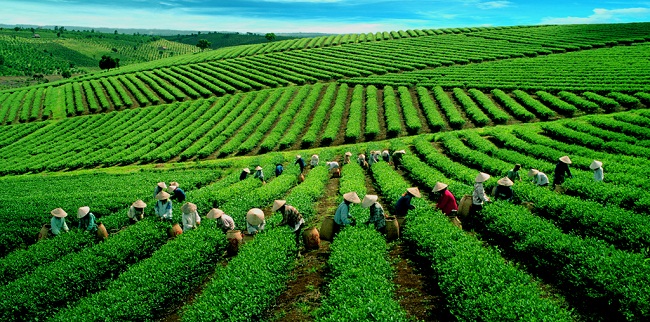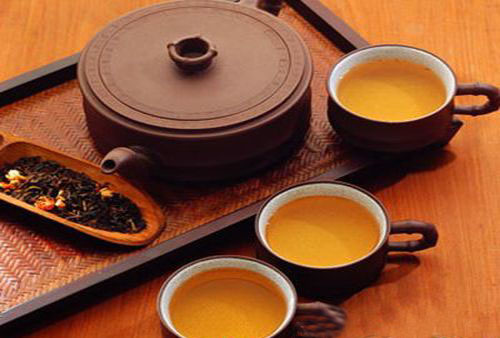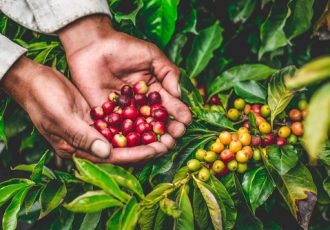Green tea in Vietnamese life
In Vietnam, we drink tea at any time of the day: from the early morning, after a meal, before bed, and sometimes when we wake up in the middle of the night. For Vietnamese people, tea is not just a normal refreshment drink, but it is also deeply rooted in our daily life and has become an essential part of Vietnamese culture.
Green tea has gained such popularity that the word che (or tra) in Vietnamese is now used to refer to infusions of all sorts of other plants: Chè nu voi (infusion of jambosier buds), chè nhân trân (infusion of acrocephalus), che thanh nhiet (mixture of refreshing plants), chè gung (of ginger), etc.

The art of green tea
The art of green tea is difficult, from choosing and preparing tea itself, boiling water, brewing and distributing it in the cups, and letting all the aroma out, to the moment when one sits down and savours its quintessence in measured gestures, with all their senses and soul.
In many parts of the countryside, people prefer tra xanh (fresh tea): The fresh, well-cleaned tea leaf is steeped in barely simmering water. The green drink served in large earthenware bowls, has a very sweet aroma.
Since ancient times, the Vietnamese have known how to flavour green tea with many species of flowers: lotus, jasmine, chlorantus, chrysanthemum, champaca, etc…

Tea making
For a real green tea, according to connoisseurs, the preparation requires very meticulous work: on the lotus pond, in the evening, in a small boat, one approaches the flowers and introduces inside each one a small tea bag made of rice paper. During the night, the flower closes in, imprisoning the tea bag, which becomes impregnated with all the fragrances and vital forces of the flower. Then, the next day, in the early hours, the master of the house only has to make his rounds in a small boat to pick up tea. To act on a larger scale, the white anthers at the top of the stamens, the gao sen (lotus rice), are picked and mixed with the tea. The whole is placed in an airtight enclosure for one or two days until the lotus rice wilts and the tea is dried over a very low fire. A single kilogram of green tea requires a hundred flowers and several days of painstaking work, which explains its price and value: this luxury product is only used on special occasions to mark the honour that the masters of the place give to their guests.
The water used to make green tea must be natural and pure. The best is the dew that settles on the lotus leaves at night. But that is not all. Knowing how to heat it is just as important. To avoid any spurious flavour, it is best to use a clay kettle over a charcoal fire. It should barely simmer: the tea set should be clean but the teapot should be boiled to give a better taste. The teapot should be heated in boiling water and then a pinch of tea, just enough for the size of the teapot, should be gently poured into it, always in two stages: the first time just enough to soak the tea strands, and the second time only enough for what you want to drink.

Tea ceremony
Choosing green tea, preparing it and offering it are already cultural behaviours that demonstrate delicacy and urbanity. Drinking tea is also one of them. Holding the cup of tea in both hands, the aesthete gently inhales, taking small sips to feel the quintessence of the beverage. The astringency felt at the tip of the tongue at the beginning of the sip softens towards the back of the throat before permeating all the internal organs. The Vietnamese drink green tea with their five senses, indeed with their whole soul.
Offering tea is not only to quench thirst, but also to show noble and cultivated manners, to testify a deep friendship, to show a spirit of concord and understanding with his host. Confidences are exchanged, a family affair is discussed, business is discussed, the world is discussed. All the flavours of heaven and earth, of people and things, can be found in a cup of tea.
In most parts of Vietnam, the custom of drinking green tea is still alive and well. Everywhere, from the countryside to the city, tens of thousands and even millions of quan nuoc (tea stalls) persist and proliferate along the roads, at the door of the village, administrations, schools, hospitals and markets…



